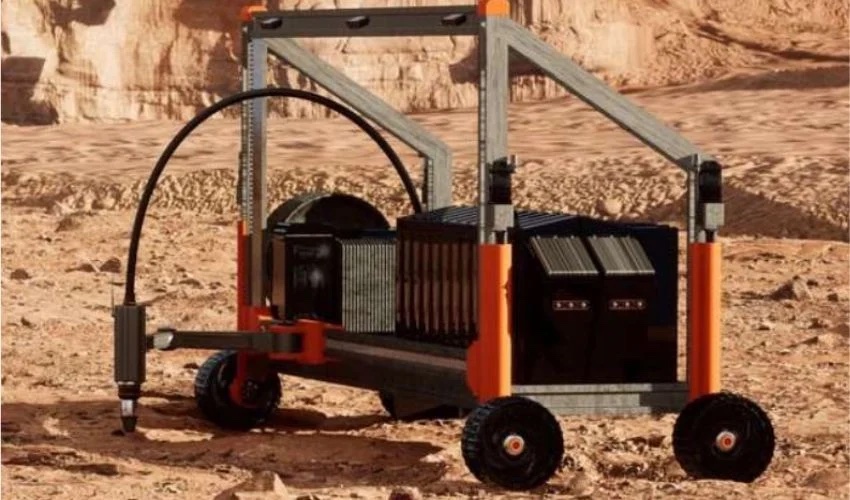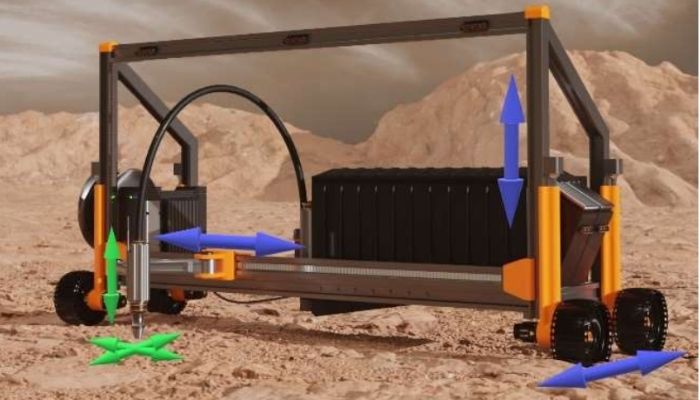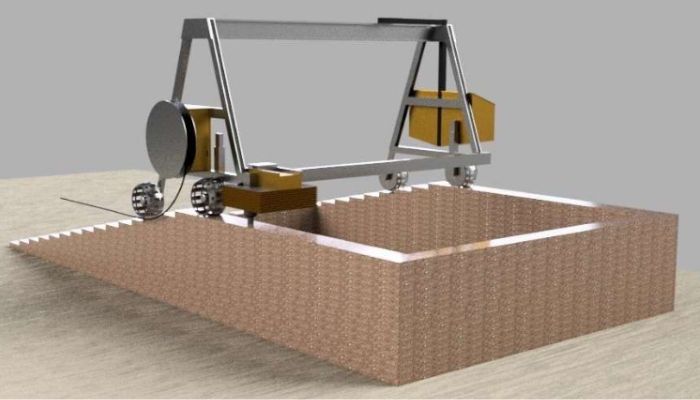Will the Mobile Gantry Soon Allow Life on Mars?

Just recently, we illustrated what life in space could potentially look like, introducing various applications such as spacesuits, habitats and even patches. All of which can be 3D printed on the spot. Now, researchers from the Department of Physics and Engineering at Taylor University in the United States have also developed a special mobile 3D printer which is also aiming towards broaching the final frontier. According to the research team, which consists of Peter J. Staritz, Caleb S. Miller, and Josiah C. McClurg, this printer will provide more flexibility for developing living space on Mars. A first test run with the prototype of their Mobile Gantry has already been successfully carried out.
With the ultimate goal of enabling human presence on Mars, researchers agreed that they needed to fully exploit the potential of additive manufacturing technologies. In order to do this, they developed a robotic approach to 3D printing habitats that is capable of producing larger, stronger and more powerful structures. Because certain obstacles have to be removed before the 3D printing can be executed successfully, the researchers created a combination of a mobile robot and gantry robots. The mobile gantry 3D printer benefits from the combination of various positive and profitable features of the two technologies, such as sequential assembly and parallel construction.

Will we soon be able to plan to build habitats on Mars, thanks to Mobile Gantry?
The Mobile Gantry combines two technologies
With the connected technologies, the researchers say that they are able to efficiently 3D print structures on Mars that are larger than the Mobile Gantry itself. No longer limited by its size, the robot can easily travel over uneven and unfamiliar planetary surfaces. Conversely, that means it can likewise travel on surfaces that it has printed itself. To be able to implement this, the robot prints structures with walls and inner partitions on which the wheels are aligned. To ensure that plans like Elon Musk’s dream to live on Mars might soon be realized, the Mobile Gantry enables special functions like parallel construction. In concrete terms, this means that efficient but less complex constructions of plants can be carried out – simultaneously! By having the robots work on the same structure parallel to each other, the time to complete the concrete 3D-printed habitat can be significantly reduced.
The prototype, named Mud Dauber, is currently being tested at Taylor University. With its integrated mobility system, the Mobile Gantry can print even on uneven surfaces and, thanks to its positioning system, is also able to position the print head precisely. Overall, the research teams are impressed with the performance of the Mobile Gantry. Especially the reduced control complexity can ensure easy and low-risk control with simultaneous high print speeds, which also have better print quality. If you want to know more about the exciting work on future life on Mars, you can find more information in the research paper HERE.

an Image of how the Mobile Gantry moves along the self-printed surface
What do you think of Mobile Gantry and life on Mars? Let us know in a comment below or on our LinkedIn, Facebook, and Twitter pages! Don’t forget to sign up for our free weekly Newsletter here, the latest 3D printing news straight to your inbox! You can also find all our videos on our YouTube channel.
*All Photo Credits: Taylor University







